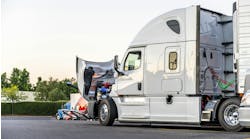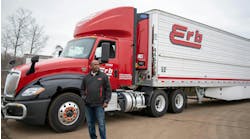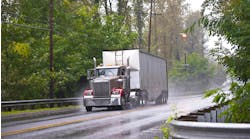Issue: If you haven't kept abreast of recent changes in the federal Stormwater Program, your fleet could be in jeopardy. Here's a closer look at the rules.
Congress first got serious about water pollution in the late 1970s when it passed a series of amendments that are collectively called the Clean Water Act. The Environmental Protection Agency (EPA) got into the act in the late 1980s and early 1990s, turning legislation into regulation with Phase I of its Stormwater Program. This program required trucking facilities and many private fleets to obtain stormwater permits if their on-site industrial activities included maintenance, fueling, washing, or material storage.
Phase I initially provided a number of permit options, but EPA eventually narrowed it down to general permits (for whole industrial sectors) and individual permits (facility-specific). While the general permit - which allows EPA to permit whole industries with one paper - provides economies of scale, it loses the accuracy that comes with targeting individual pollutants.
EPA liked the general permit because it reduced agency paperwork, but it disliked the broad-stroke approach to coverage that resulted. Eventually, however, general permits were designed that contained specific requirements for each industry.
EPA also expanded the requirements that industries had to meet. For example, current permits require a trucking facility to verify with other appropriate regulatory agencies that its discharge will not harm endangered species or historic resources. Needless to say, these changes mean more paperwork for fleets.
At the same time, EPA began to delegate stormwater program authority to individual states. States formed their own system of permitting based on the federal permits, resulting in a hodgepodge of state and federal permits for stormwater, wastewater, and vehicle washing water. They often overlapped or contained inconsistent requirements, and many required costly laboratory analysis of stormwater, which then had to be submitted to government regulators.
Over time, two major points of confusion arose. After initiating the group-permit application process and accepting applications from trucking facilities, EPA abruptly cancelled the process and never fully notified the fleets that had applied for group permits. So there are still facilities out there that think they have federal group permits - but don't.
The second point of confusion occurred when EPA terminated the federal baseline general permit in September 1997. It turns out that the replacement permit, called the "Modified Multi-Sector General Permit," was not finalized until a full year later - September 1998.
Most trucking facilities were forced to file for extensions under the baseline general permit and many then missed the release of the modified multi-sector permit in 1998. Since facility operators had only 90 days to terminate the extensions and apply for multi-sector permits, any facility still holding an extension to the original baseline general permit is probably out of compliance - and may not even realize it.
The future of stormwater permitting should be clearer by the end of the year. EPA is expected to issue Phase II rules, including a new and most likely expensive series of stormwater controls.
While the Phase II does not provide a list of specific industries to be permitted, it does require small municipalities and small construction sites to meet new, measurable goals. This could mean, for example, that small locals might issue permits of their own to trucking facilities located within their borders.
In addition, EPA is showing less tolerance for noncompliance with regard to the permit program. And several states now have new enforcement initiatives that target stormwater scofflaws with increased penalties.
But the news for fleets is not all bad. For example, Phase II also contains a "No-Exposure Certification," which serves as a type of "opt out" process. In other words, fleets that keep materials, maintenance, and fueling procedures covered and away from precipitation and stormwater runoff might be eligible for a certificate that would exempt them from the permit requirement for five years at a time. This program could serve as a significant financial boon to those fleets that qualify.
For further information, fleets should check with their state environmental agencies, as well as their regional EPA headquarters. More specific compliance information can also be obtained from the Green Truck Environmental Compliance Assistance Web site at www.truckline.com/greentruck.


